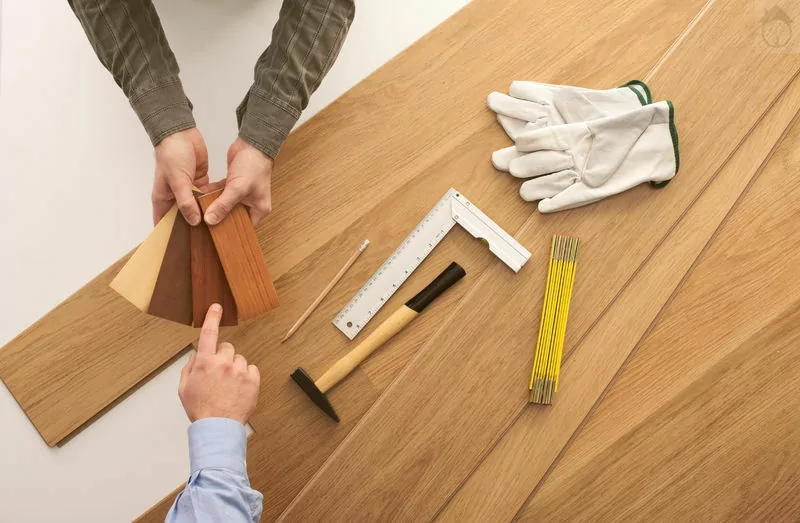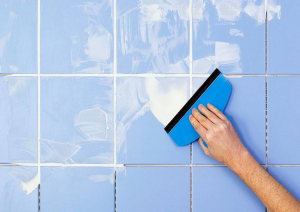Selecting the right color and style of laminate flooring is essential to creating a cohesive, stylish, and functional space. With so many options available, from light to dark tones and a variety of textures, it’s important to choose a laminate that complements your room’s aesthetic, lighting, and overall design. Whether you want to make a small room feel larger or add warmth to a modern interior, choosing the best colors and styles can transform your space.
In this guide, we’ll explore the key factors to consider when choosing the perfect laminate flooring for your home.
1. Consider the Room’s Size and Lighting

The size and natural lighting of the room play a major role in determining which laminate colors and styles will work best.
In this guide, we’ll explore the key factors to consider when choosing the perfect laminate flooring for your home.
Light Colors for Small or Dark Rooms
Light-Colored Laminate: Shades like white, beige, light oak, or gray can help small rooms feel larger and more open. They reflect more natural light, which brightens the space and makes it feel airier.
Best Rooms: Light laminate is ideal for small rooms, such as bedrooms, bathrooms, or home offices, or rooms with little natural light, like basements.
Dark Colors for Larger or Well-Lit Rooms
Dark-Colored Laminate: Shades like walnut, dark oak, or espresso bring depth and richness to larger rooms. Dark laminate can make large, open spaces feel cozier and more intimate.
Best Rooms: Dark laminate works well in living rooms, dining areas, and master bedrooms, especially those with plenty of natural light.
Pro Tip: If you want to install dark laminate in a smaller room, balance it with lighter walls and furniture to avoid making the space feel too confined.
Best Rooms: Light laminate is ideal for small rooms, such as bedrooms, bathrooms, or home offices, or rooms with little natural light, like basements.
2. Modern and Minimalist Styles

Neutral Colors: For a modern, minimalist look, opt for neutral tones like light gray, soft beige, or whitewashed laminate. These colors create a clean, uncluttered backdrop for sleek furniture and decor.
Smooth or Matte Finishes: A smooth, matte finish adds a contemporary touch to minimalist spaces, enhancing the clean lines and simplicity of the design.
Rustic or Farmhouse Styles
Warm Wood Tones: If you love a rustic or farmhouse aesthetic, choose laminate flooring in warm, natural wood tones like oak, pine, or hickory. These shades add warmth and charm, making the space feel inviting and cozy.
Textured Finishes: Laminate with a hand-scraped or distressed texture enhances the rustic look by mimicking the imperfections of real wood.
Industrial Styles
Gray and Weathered Tones: For an industrial-style room, opt for laminate in cool, gray tones or weathered wood looks. These shades create a rugged, urban feel that complements exposed brick, metal, and other industrial elements.
Wide Planks: Wide plank laminate flooring enhances the industrial aesthetic by creating a bold, modern look.
Textured Finishes: Laminate with a hand-scraped or distressed texture enhances the rustic look by mimicking the imperfections of real wood.
Traditional or Classic Styles
Rich Wood Colors: Traditional spaces benefit from deep, rich wood tones like cherry, mahogany, or walnut. These colors add elegance and timeless appeal to formal living rooms, dining rooms, and studies.
Glossy Finishes: A glossy finish enhances the classic look by adding a polished, sophisticated sheen to the flooring.
Wide Planks: Wide plank laminate flooring enhances the industrial aesthetic by creating a bold, modern look.
Textured Finishes: Laminate with a hand-scraped or distressed texture enhances the rustic look by mimicking the imperfections of real wood.
3. Coordinate with Existing Colors in the Room

When choosing the color of your laminate flooring, consider the existing color palette in the room, including the walls, furniture, and decor. Coordinating the floor with these elements creates a harmonious look.
Complement the Walls
Contrast or Complement: If your walls are painted in light colors, dark laminate flooring can create a striking contrast that adds depth and interest to the space. Conversely, light-colored laminate can complement darker walls for a balanced look.
Match with Furniture
Wood Furniture: If your room features wooden furniture, aim to match the wood tones of your laminate flooring with the furniture. For example, if you have light oak furniture, a similar shade of laminate flooring will create a cohesive, harmonious look.
Mixed Materials: For rooms with a mix of materials, such as metal or glass furniture, opt for neutral or versatile laminate colors that don’t clash with the various textures in the room.
Pro Tip: Avoid choosing laminate that is too similar in color to your walls or furniture, as this can make the room feel flat. A bit of contrast adds dimension and visual interest.
4. Choose the Right Plank Size and Width

The size and width of the laminate planks also influence the overall look of the room. Larger planks tend to make a room feel more open, while narrow planks create a more traditional, detailed look.
Wide Planks for Modern, Open Spaces
Wide Planks (7+ inches): Wide planks are perfect for modern, open-concept spaces, as they create a seamless, expansive feel. Fewer seams between the planks enhance the room’s sense of space.
Best Rooms: Wide planks are ideal for large living rooms, dining rooms, or master bedrooms.
Narrow Planks for Traditional or Smaller Spaces
Narrow Planks (under 5 inches): Narrow planks create a more detailed and traditional look. They work well in smaller rooms, adding texture and dimension without overwhelming the space.
Best Rooms: Use narrow planks in hallways, kitchens, and small bedrooms for a classic, refined look.
5. Think About Practical Considerations

While style is important, you also need to consider the practical aspects of choosing laminate flooring, especially in high-traffic areas or homes with pets and children.
Best Rooms: Use narrow planks in hallways, kitchens, and small bedrooms for a classic, refined look.
Durability and Maintenance
Textured Finishes for High-Traffic Areas: Laminate with a textured or hand-scraped finish can help hide scratches and wear, making it a great choice for busy households or homes with pets.
Easy-to-Clean Finishes: If you’re looking for easy maintenance, choose laminate with a smooth or satin finish that’s easy to clean and resistant to stains.
AC Rating for Durability
High AC Rating for Durability: Check the AC rating of the laminate flooring, which measures durability. For high-traffic areas like kitchens, entryways, or living rooms, choose laminate with an AC4 or AC5 rating, which indicates high resistance to wear, scratches, and impact.
6. Consider the Room’s Function

Each room in your home has its own function, and the type of laminate flooring you choose should reflect the room’s purpose.
Living Rooms and Bedrooms
Comfort and Style: Choose laminate that adds warmth and style to your living spaces. Warm wood tones like oak or hickory create a cozy, welcoming feel, while cooler tones like gray work well in modern, minimalist spaces.
Kitchens and Bathrooms
Water-Resistant or Waterproof Laminate: In moisture-prone areas like kitchens and bathrooms, choose water-resistant or waterproof laminate flooring to prevent damage from spills and humidity. Look for laminate with a textured, non-slip surface for added safety.
Hallways and Entryways
Durable Finishes: Hallways and entryways see a lot of foot traffic, so choose a laminate with a durable, scratch-resistant finish. Neutral tones like gray or beige are practical choices for these areas.
Final Thoughts
Choosing the best colors and styles of laminate flooring for your space involves balancing aesthetics with functionality. Consider the size and lighting of the room, your interior design style, and practical factors like durability and maintenance. Whether you prefer the clean lines of modern laminate or the rustic charm of textured wood tones, the right laminate flooring will enhance your home’s overall look and feel.
By following these tips, you’ll be able to choose laminate flooring that not only fits your design vision but also meets the practical needs of your lifestyle.





